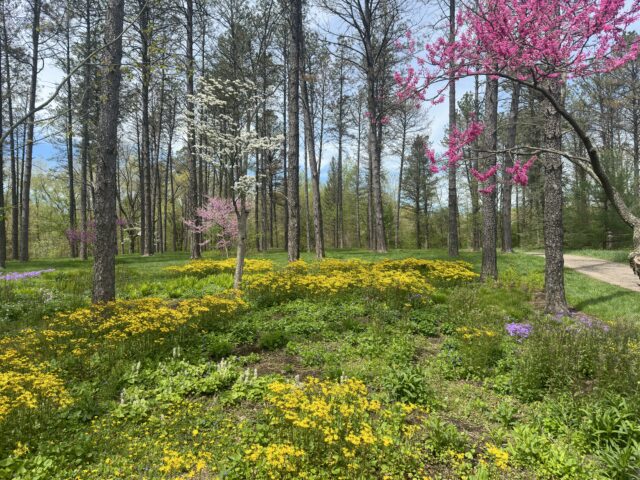Inside a Scientific Conference: Mycological Society of America
September 23, 2022

By Claudia Bashian-Victoroff
Every year in July the mycologists of America converge for a week of academic talks, scientific posters, riveting discussions about fungal biology, and professional networking. This year, I was lucky to go to Gainesville, Florida to participate in my fourth Mycological Society of America (MSA) meeting. After meeting virtually for the past two years, this year’s meeting brought a lot of excitement… despite the hot and humid weather of Florida in mid-July!
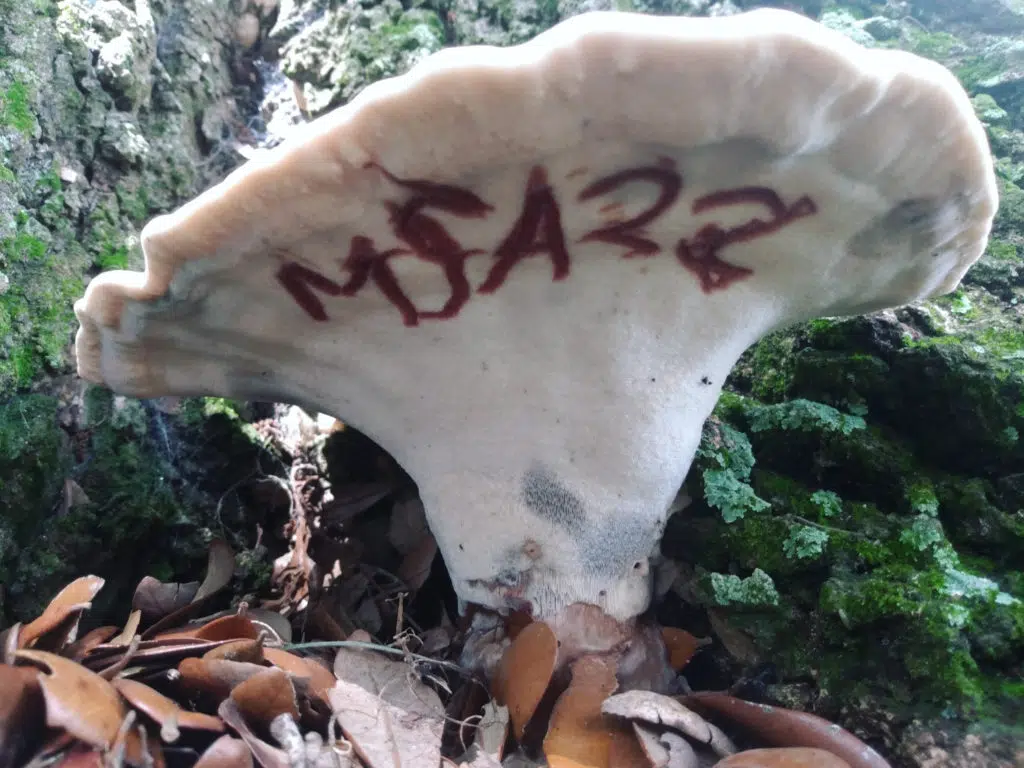
As it does every year, MSA began with a foray through a local natural area. As a young mycologist myself, there is no better way to learn new fungi than by walking through the woods with one of your mycological heroes. I was lucky enough to walk with Dr. Terry Henkel, a fungal taxonomist from Humboldt State University who specializes in tropical fungi! We found some incredible fungi; one crowd favorite was a barely visible cordyceps fungus growing from the body of a dead ant (cue zombie ants! https://www.youtube.com/watch?v=XuKjBIBBAL8). Not only is the annual MSA foray an awesome way to get to know new fungi, but it is also a way to get to know the brilliant, often very quirky individuals that students and early career mycologists look up to.

After the foray and the opening reception, the next three days of the conference were scheduled from morning until night with talks, posters, meetups, and anything in between! This year was an exciting year for me because I served on the executive board of the MSA Student and Postdoc Section, meaning that I was able to help plan aspects of the conference. For example, each day of the conference the student section hosted a coffee hour called Mycologists and Musing, or MnM’s for short. Every morning one of our mycological heroes talked to us about their lives and careers. Rather than intimidating discussions about research, we discussed things like how our heroes felt during graduate school, or how they balance life and work as professors.
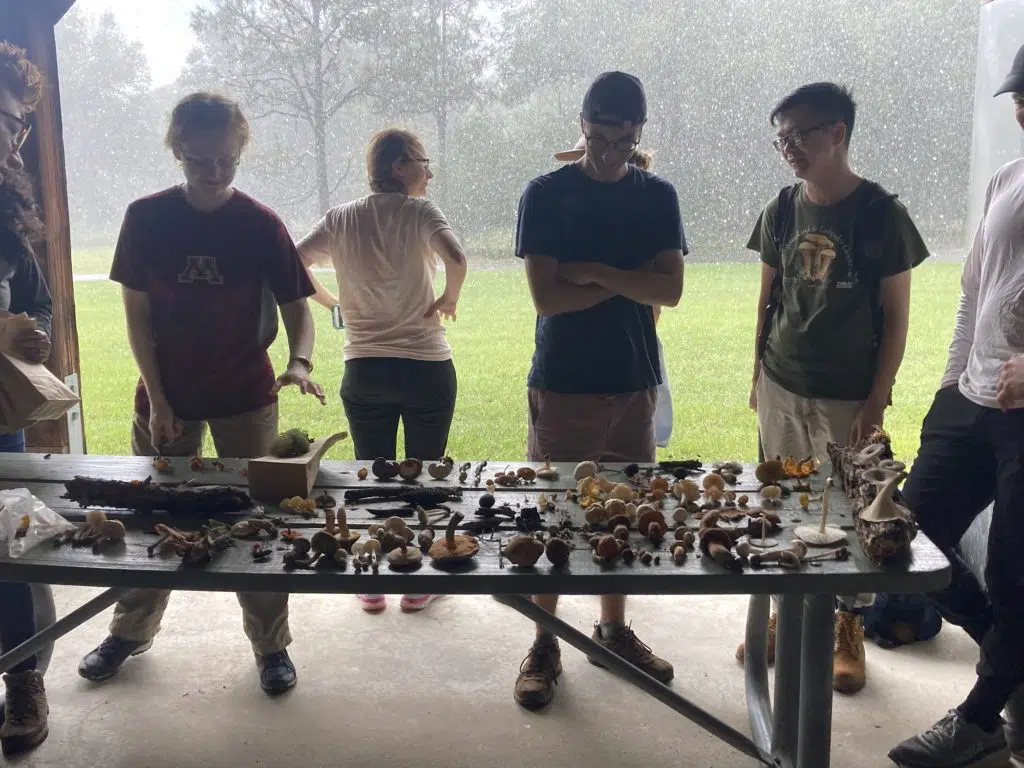
Following MnM’s came a series of symposia, during which scientists presented results from their research or updates from ongoing projects. Symposia topics ranged from fungal chemistry, plant-fungal interactions, fungal toxins, cell biology, fungal genetics and much much more! By the end of a session of symposia everyone was ready for the more laid-back poster sessions. At the poster sessions many scientists presented simultaneously with elevator pitch style descriptions of their research. The casual space allowed people to walk around and learn about new and exciting research. This year I presented about the emerging beech tree infestation, Beech Leaf Disease, and the impact of this disease on soil fungi. By presenting at MSA I was able to share results from the Holden research department with a broader academic community, and to get advice from my colleague on how best to continue the research.
These conversations are the main benefit of conferences like MSA. As Holden scientists we attend academic conferences to participate in the scientific community. Not only is this a huge opportunity for professional development and networking, but it is also a great way to disseminate scientific information and to give and get advice from other scientists.
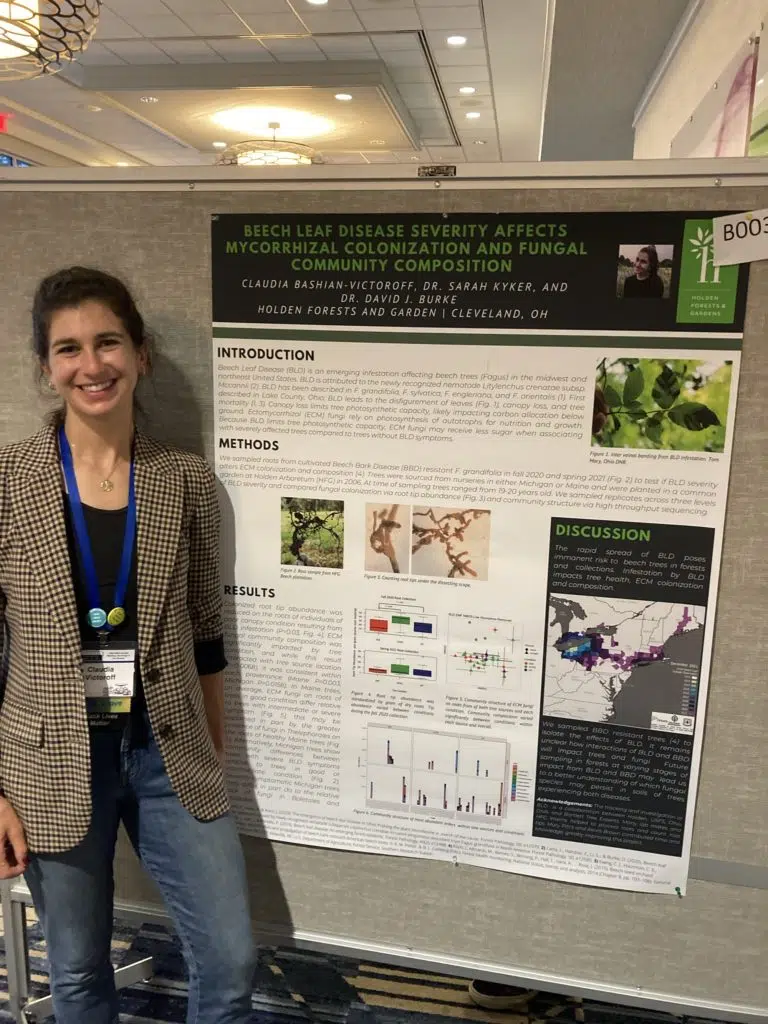
At the end of the conference, we had two social events. The first, Mycological Trivia Night, was hosted by the students for the students. This pub style trivia night was the perfect way to unwind after a long conference and to better get to know other young mycologists. (Check out Science on Friday from Week 1 of HF&G Mushroom Month for some fun mycology trivia!!)
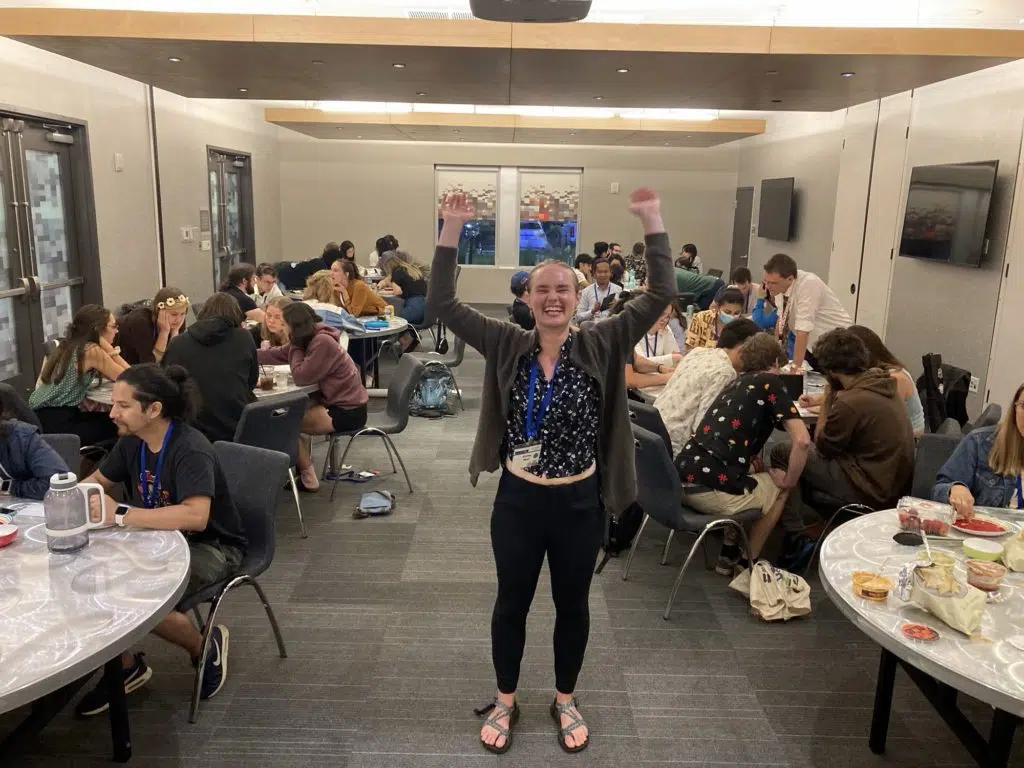
The second social event, which happens every year, was a massive auction to benefit student travel awards for future conferences. The more money raised during the auction; the more students are supported to attend the conference in the coming year. MSA members donate all sorts of mushroom related goodies to be auctioned off, such as rare books, mushroom dyed wool, 1960’s style inspired mushroom decor, trinkets, jewelry, and anything in between. Often professors will get into a high spirited bid off, all to benefit the students. Each year this jovial event is a reminder of how much the professors care about the future of mycology, and about the students and early career individuals who will be a part of it.
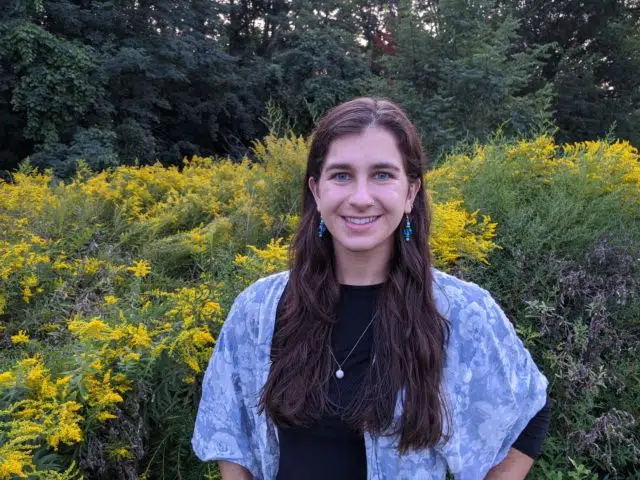
Claudia Bashian-Victoroff, MS
Research Specialist
I am a fungal ecologist focused on connections between soil fungi and tree health. My research couples field collections with modern molecular identification methods to investigate ectomycorrhizal species diversity and function. As a research specialist in Dr. David Burke’s lab at the Holden Arboretum, I support research on soil ecology and forest pathology. Currently, I focus on the role of soil fungi in urban canopy restoration in Cleveland, OH. Trees growing in urbanized environments are subject to pressures such as habitat fragmentation, exposure to heavy metals, and soil compaction. Mycorrhizal fungi can enhance plant growth, disease resistance, and drought tolerance; therefore, it is necessary that we establish a better understanding of how these fungi might improve outcomes of urban restoration efforts. Beyond this, I enjoy discussing the importance of fungal research and conservation with diverse audiences through teaching, writing, and mentorship.




